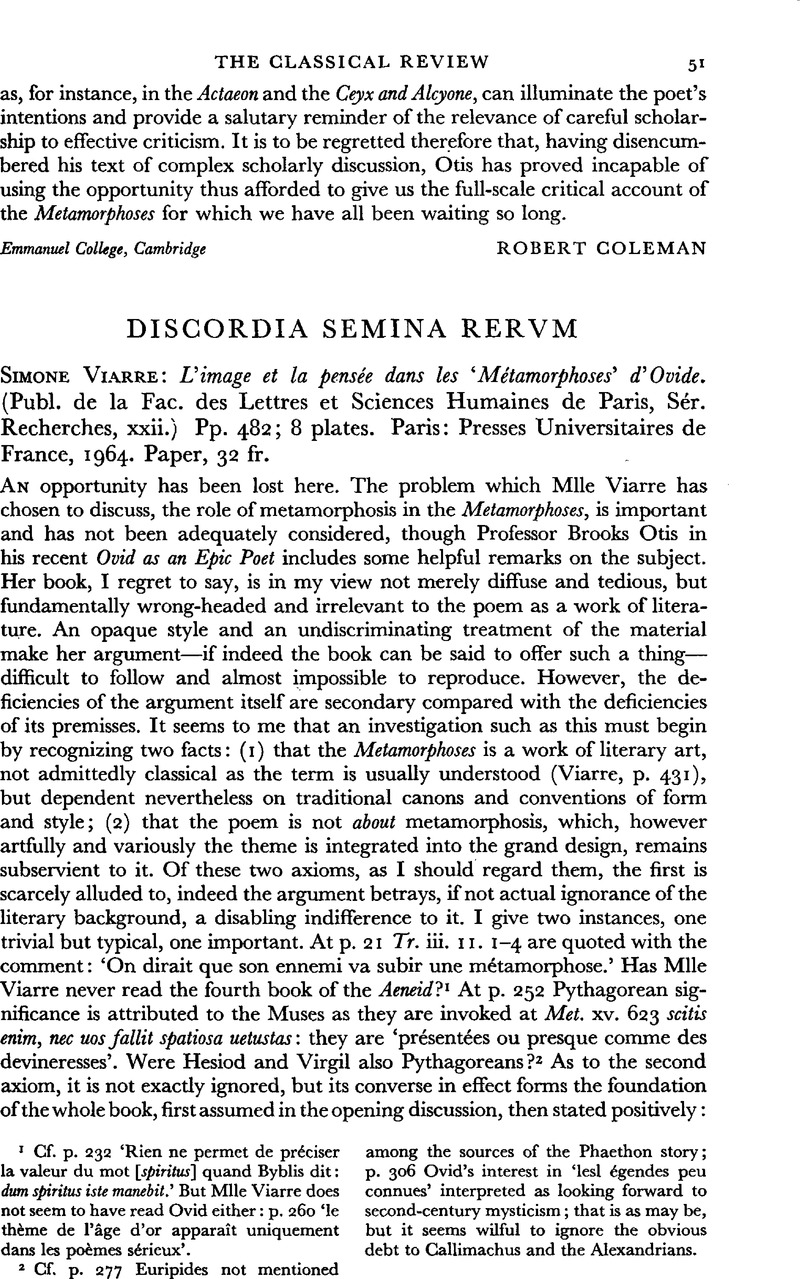Published online by Cambridge University Press: 27 February 2009

page 51 note 1 Cf. p. 232 ‘Rien ne permet de préciser la valeur du mot [spiritus] quand Byblis dit: dum spiritus iste manebit.’ But Mlle Viarre does not seem to have read Ovid either: p. 260 ‘le thème de l'âge d'or apparaît uniquement dans les poèmes sérieux’.
page 51 note 2 Cf. p. 277 Euripides not mentioned among the sources of the Phaethon story; p. 306 Ovid's interest in ‘lesl égendes peu connues’ interpreted as looking forward to second-century mysticism; that is as may be, but it seems wilful to ignore the obvious debt to Callimachus and the Alexandrians.
page 52 note 1 A notable exception throughout the iconographic tradition is Daphne: cf. the plate opposite Viarre, p. 96 (incidentally it is not clear precisely what the plates are intended to illustrate; I noticed no reference to them in the text). But this is such an exception as proves the rule, for the metamorphosis of a human being into a tree is technically a comparatively simple matter to depict. The point can be conveniently illustrated from two editions of the Metamorphoses that are before me as I write. In the Venetian edition of 1517 (Prince d'Essling, Les livres à figure vénetiens, i [1907], p. 231; no. 230) there are 59 woodcuts, of which only five may be said to illustrate the moment of metamorphosis, and of these four show changes into trees (Daphne, Dryope, Cyparissus, Myrrha). In the great Amsterdam folio of 1732 the proportion of ‘metamorphosis’ illustrations is higher, about 25 out of 130, but of these few, apart from six of ‘tree-changes’, depict a transitional state. One would have thought that the most obviously ‘plastic’ moment of the Daphne episode in Ovid's account was her flight (Met. i. 527–9; cf. Moschus, Europa 126–30).
page 52 note 2 Cf. Otis, op. cit. 272–3 on metamorphosis as deus ex machina.
page 52 note 3 Otis, op. cit. 297–8.